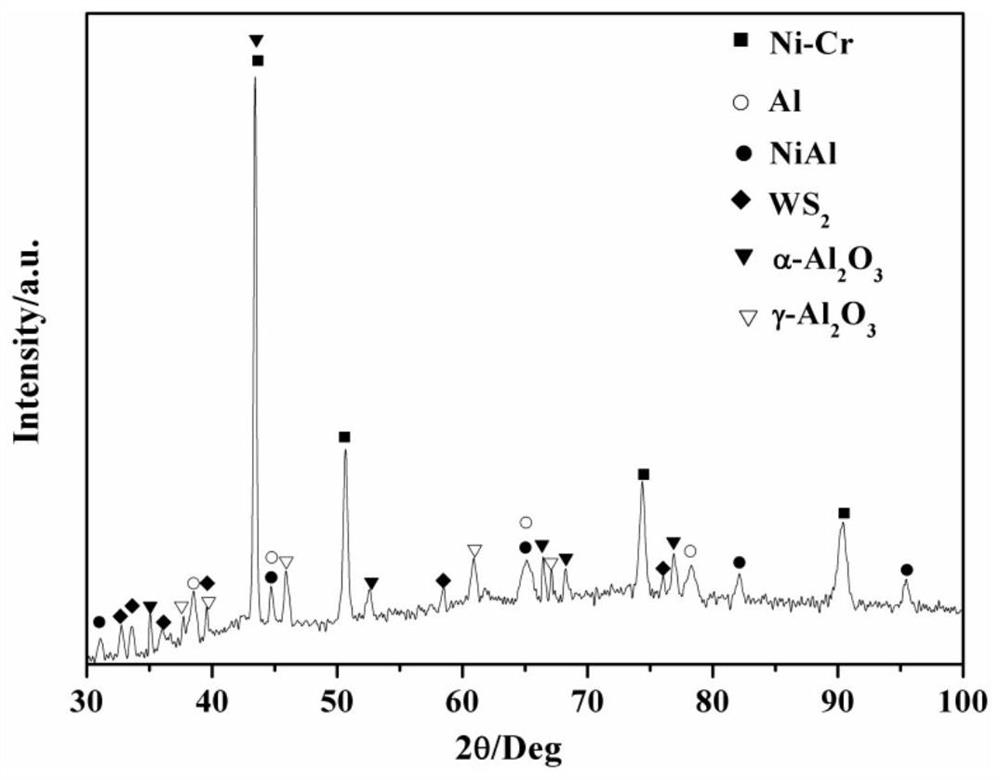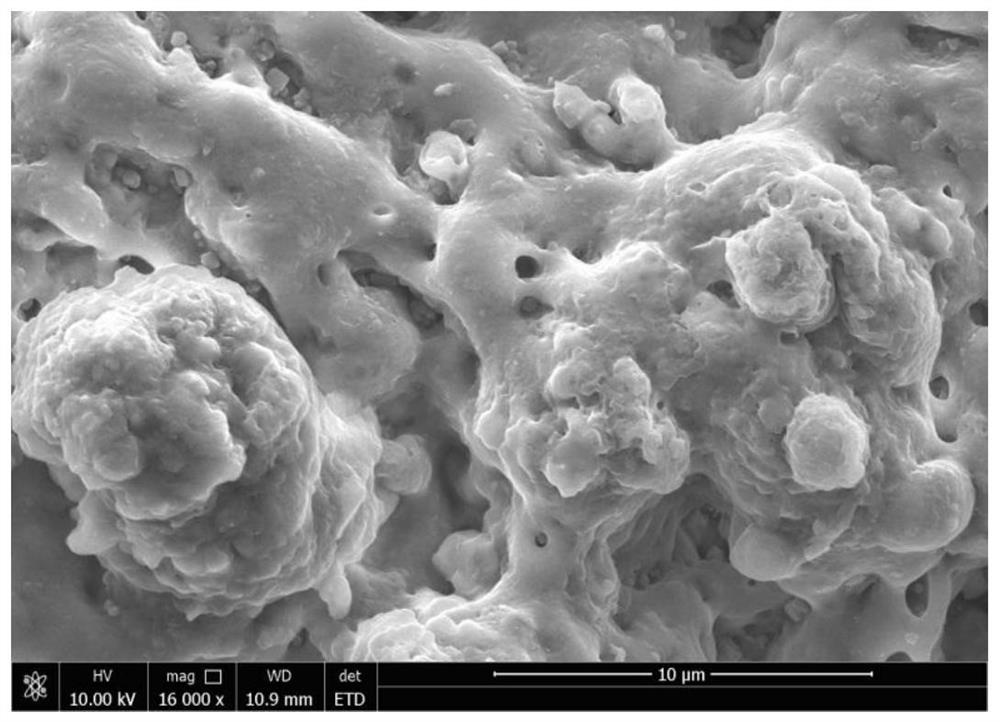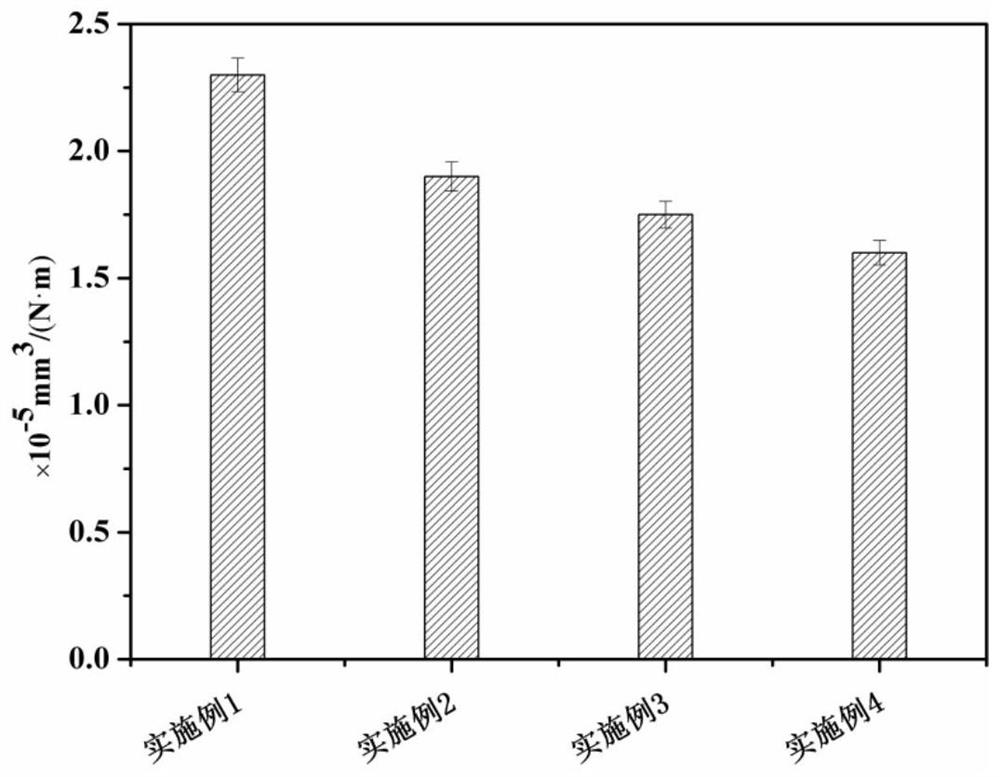Nickel-based alloy surface wear-resistant coating and preparation method thereof
A nickel-based alloy, wear-resistant coating technology, applied in metal material coating process, coating, hot dip plating process and other directions, can solve the problems of increasing the replacement frequency of parts, friction and wear of nickel-based alloys, and easy failure, etc. To achieve the effect of increasing the mechanical bonding strength, enhancing the interface bonding strength, and enhancing the wetting effect
- Summary
- Abstract
- Description
- Claims
- Application Information
AI Technical Summary
Problems solved by technology
Method used
Image
Examples
Embodiment 1
[0027] (1) The Ni-Cr nickel-based alloy is polished to a mirror surface with sandpaper and diamond abrasive paste, and then corroded in a dilute hydrofluoric acid solution for 3s to obtain a rough surface;
[0028] (2) Pure aluminum with a purity of 99.5% is heated to 690°C in a vacuum furnace, and an inert argon-assisted hot-dip aluminum process is used to pour argon into the vacuum furnace until the pressure in the furnace reaches 0.1MPa. The surface of the Ni-Cr nickel-based alloy with the rough surface is immersed in pure aluminum liquid for 10 minutes to prepare an aluminum-impregnated layer with a thickness of 500 μm. A NiAl diffusion layer is formed between the base alloys;
[0029] (3) Configure 6g / L Na 2 WO 4 , 10g / L Na 2 S, 7g / L Na 3 PO 4 , 1g / L NaOH mixed aqueous solution;
[0030] (4) Use a forward current density of 2A / cm in the time range of 0-50s 3 , The reverse current density is 1.5A / cm 3 ; After 50s, use a forward current density of 3A / cm 3 , the rev...
Embodiment 2
[0033] The difference between this example and example 1 is: in step (2), pure aluminum with a purity of 99.5% is heated to 720°C in a vacuum furnace, and argon gas is injected into the vacuum furnace until the pressure in the furnace reaches 0.15MPa, and the preparation The thickness of the hot-dipped aluminum layer was 800 μm, the annealing temperature was set to 350°C, and the rest were the same as in Example 1.
[0034] From figure 2 Al can be found in 2 o 3 WS dispersed in the ceramic coating 2 Phase particles, and Al 2 o 3 Ceramic coatings are distributed with tiny pores.
Embodiment 3
[0036] The difference between this embodiment and embodiment 2 is: the nickel base alloy is Ni-Cr-Mo in the step (1); the Na in the step (3) 2 WO 4 The concentration is 8g / L, Na 2 The S concentration is 16g / L; in step 4, the forward current density is 3A / cm in the time range of 0-50s 3 , the reverse current density is 2A / cm 3 ; After 50s, use a forward current density of 4A / cm 3 ; All the other are identical with embodiment 2.
[0037] The plateau value of the friction coefficient of the wear-resistant coating on the nickel-based alloy surface prepared in Example 3 at room temperature is about 0.21, which is lower than that of MoS prepared by powder sintering 2 The optimum friction coefficient (about 0.36) of reinforced NiCr alloy is also lower than that of single Al obtained by micro-arc oxidation 2 o 3 The coefficient of friction of the coating (0.3-0.4).
PUM
| Property | Measurement | Unit |
|---|---|---|
| thickness | aaaaa | aaaaa |
| friction coefficient | aaaaa | aaaaa |
| friction coefficient | aaaaa | aaaaa |
Abstract
Description
Claims
Application Information
 Login to View More
Login to View More - R&D
- Intellectual Property
- Life Sciences
- Materials
- Tech Scout
- Unparalleled Data Quality
- Higher Quality Content
- 60% Fewer Hallucinations
Browse by: Latest US Patents, China's latest patents, Technical Efficacy Thesaurus, Application Domain, Technology Topic, Popular Technical Reports.
© 2025 PatSnap. All rights reserved.Legal|Privacy policy|Modern Slavery Act Transparency Statement|Sitemap|About US| Contact US: help@patsnap.com



